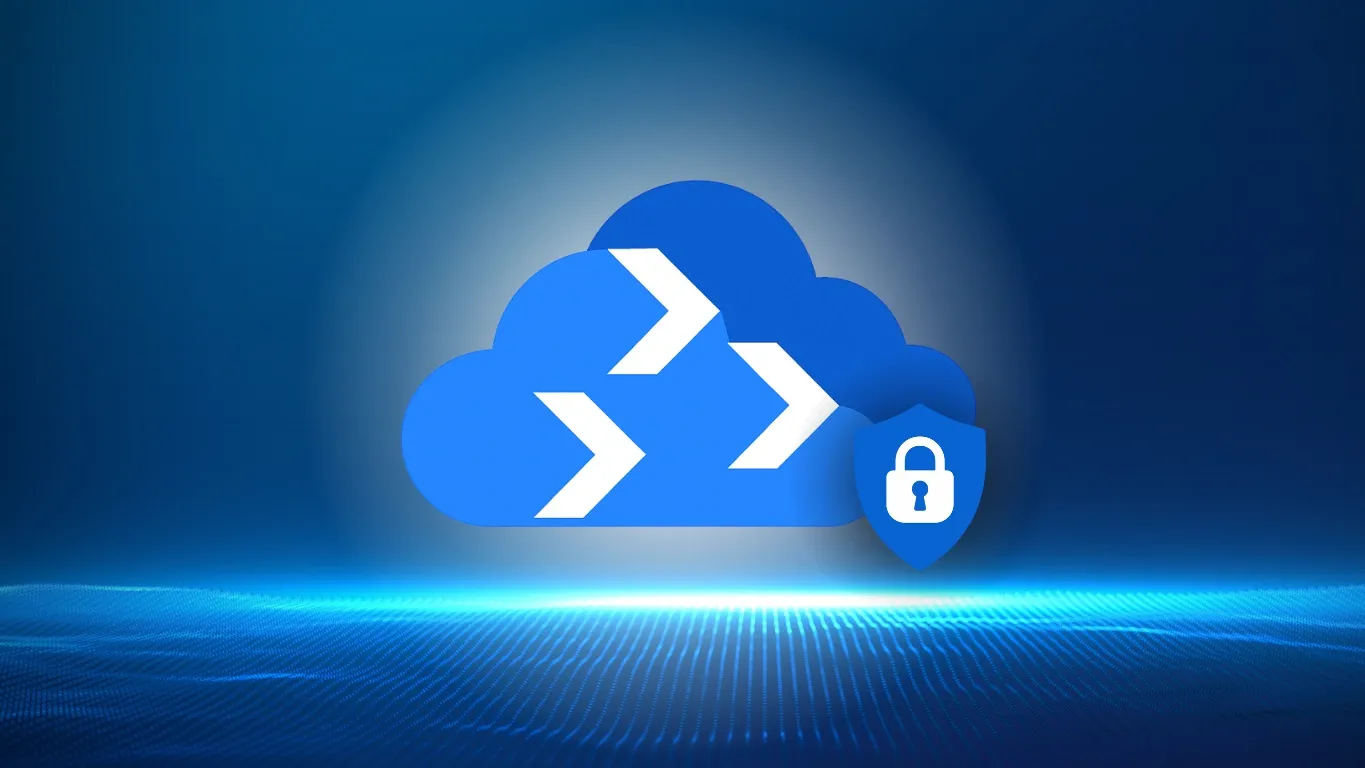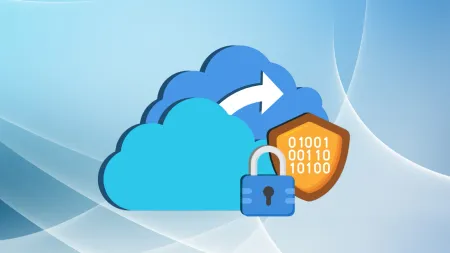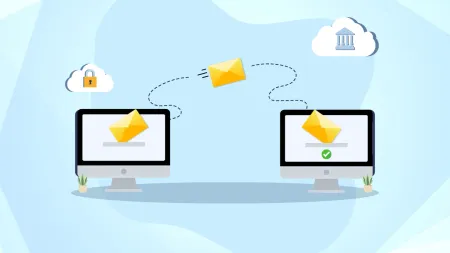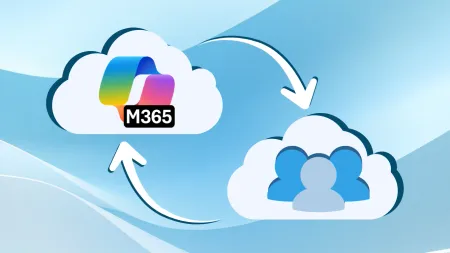Ensuring Security During Azure Migration
Learn the best security practices for Azure migration. Protect data, ensure compliance, and minimize risks with Azure security tools and strategies.

Migrating to the cloud—especially Microsoft Azure—opens the door to new security risks, including data breaches, compliance failures, and misconfigurations. Increasingly, cybercriminals use AI to launch real-time, adaptive attacks that exploit these vulnerabilities. Azure isn’t exempt from these threats, particularly during migration when systems are in flux and data is most exposed.
A single misstep can trigger serious consequences. Beyond breaches and compliance gaps, your organization could face costly downtime, regulatory penalties, and long-term damage to its reputation.
Types of Azure Migration
Azure is a dominant player in the cloud space, with over 85% of Fortune 500 companies leveraging it—though many do so in hybrid or multi-cloud environments. This doesn’t mean most migrations are from Azure to Azure; many involve transitions from on-premises infrastructure or other cloud platforms. Azure-to-Azure migrations are typically driven by specific needs such as:
- Moving region-to-region to address data residency, remedy compliance or latency issues
- Upgrading legacy tiers or virtual machines for better performance
- Consolidating subscriptions or resource groups for improved cost management or governance
- Aligning workloads to organizational restructuring or M&A activity
- Modernizing infrastructure by moving from on-premises to Azure cloud environments
Migrations paths vary. Migrating non-Azure legacy systems often requires rebuilding applications from scratch which can lead to compatibility and reconfiguration issues, cost overruns, downtime and service disruptions, along with security and compliance considerations and on-going staff training.
Key Security Risks in Azure Migration
Every data migration incurs security risk whether you are migrating Azure-to-Azure or from another system. The chief security risks that you must address proactively are:
- Data exposure and unauthorized access
- Compliance and regulatory challenges
- Network vulnerabilities
- Identity and access management
The chart below outlines these security risks in Azure migration, its impacts, and mitigation strategies.
| Security Risk | Impact | Mitigation Strategy |
|---|---|---|
| Data Exposure & Unauthorized Access | Sensitive data interception or theft | TLS 1.3 encryption, enable end-to-end encryption (in transit & at rest), enforce MFA and RBAC with least privilege. Use MS Defender for Cloud |
| Compliance and Regulatory Challenges | Violations of CMMC, HIPAA, GDPR, FedRAMP, and NIST SP 800-171 standards | Use Azure Policy, conduct regular audits, enforce data encryption, and ensure USA data residency. Implement DLP and Microsoft Purview |
| Network Vulnerabilities | Breaches caused by misconfigured firewalls, VPNs, NSGs | Use Azure Firewall, Network Security Groups with logging, Private Link, Defender for Cloud and ExpressRoute for secure traffic routing |
| Identity and Access Management (IAM) Issues | Unauthorized access from weak identity controls | Enforce Zero Trust, use Entra ID with MFA, Conditional Access, role reviews, and PIM/JIT access |
How AI Fits into Azure’s Threat Landscape
AI-driven attacks which exploit Azure environments like VM’s, APIs, databases and containers are risks that can be mitigated by backing up data with Azure Backup and by deploying Microsoft Defender for Cloud and Azure Sentinel for real-time SIEM threat detection and response.
Azure and TLS 1.3: Phasing in Tighter Security
Although Microsoft Azure and NIST still support Transport Layer Security (TLS) 1.2, they’re encouraging a shift to TLS 1.3 for stronger security and performance benefits. NIST 800-52 Rev. 2 mandates federal systems support TLS 1.2 for FIPS cyber suites although TLS 1.3 is now the expected baseline for handling CUI.
As of now, there is no official date for phasing out TLS 1.2.
Access Controls and Encryption: The Front Lines of Defense
Access controls act as a locked vault so no one can infiltrate your system. The vault enforces who can access what, when, and under what conditions. They form the backbone of security by ensuring least privilege access and strong identity verification.
-
Azure’s Role-Based Access Control (RBAC) strictly enforces least privilege, ensuring users and services only receive permissions needed for their role.
-
Azure’s Key Vault stores encryption keys, passwords, TLS/SSL certificates, and API credentials. Key Vault is fully auditable via Azure Monitor, enabling forensic visibility and compliance.
-
Conditional Access, MFA, and audit logging strengthen security and supports regulatory compliance frameworks such as HIPAA, GDPR, and NIST 800-171.
-
Microsoft Entra ID provides centralized identity management, reducing the risk of human error and misconfigurations in access provisioning.
-
Together, these tools enable a Zero Trust architecture, where no entity, internal or external, is automatically trusted. Every request is verified based on identity, device state, location, and more.
Encryption scrambles data. Even if an attacker successfully breaches your system, if they cannot access the encryption keys, the data they get is meaningless. Azure encryption provides data protection at rest and in transit, regulatory compliance, and operational flexibility in a layered encryption strategy.
The Encryption Layers Securing Your Data
Layer 1: Data at Rest (Stored Data)
- Server-side encryption (SSE) – Automatically encrypts your data when stored in Azure
- Azure disk encryption (ADE) – Applies full-disk encryption to Azure VM IS and data disks
Layer 2: Data in Transit (Data on the Move)
- Use at minimum TLS 1.2, preferably TLS 1.3 encryption for improved performance and security encrypting the connection.
- Implement Azure Key Vault for key certificate management.
Layer 3: Client-Side Encryption (Encrypting Data Before It Hits Azure)
- Used when you need to maintain full control over keys, this is critical for CUI or regulatory requirements.
- One key and encryption manager—you, not your clients.
- Azure doesn’t see the keys since data’s encrypted before it enters Azure
Layer 4: Key Management (Data in Key Vault)
- Key rotation replaces the current key with new material but keeps the same name that can still be decrypted. This ensures backward compatibility unless older key versions are explicitly deleted.
- Configurable rotation policy can be set to automatic based on policy or done manually.
Best Practices for Securing an Azure Migration
Implement Role-Based Access Control (RBAC) and Zero Trust
- Enforce least privilege principles using RBAC and regularly review permissions.
- Require Multi-Factor Authentication (MFA) with Conditional Access policies for all users.
- Monitor sign-in activity with Azure AD Identity Protection.
Strengthen Network Security
- Use Azure Firewall and Network Security Groups (NSGs) for traffic control and filtering.
- Enable DDoS protection for Azure workloads.
- Secure using VPN Gateway and ExpressRoute based on workload sensitivity.
Monitor and Detect Security Threats
- Enable Microsoft Defender for Cloud for real-time security monitoring.
- Use Microsoft Sentinel for SIEM-based threat detection and response.
- Automate security responses and alerts with Microsoft Defender for Cloud’s integrated recommendations and workflows.
Compliance Considerations in Azure Migration
Identify Compliance: Understanding which legal, regulatory, and organizational compliance requirements affect your organization is critical in any Azure migration. Use Azure Compliance Manager to track regulatory requirements.
Data Classification: Identify your data sensitivity (public, confidential, or CUI).
Data Residency: Some data must reside within certain geographic regions.
Security Baselines: Set up with Azure Policy.
Encryption and Key Management: Use Azure tools to encrypt both data at rest and data in transit.
Access Controls: Implement RBAC, Conditional Access, MFA, and Entra ID.
Log and Audit: Enable Azure Monitor, Defender for Cloud, and activity logs (retain logs as compliance regs mandate).
Secure Azure Migration: A Strategic Transformation
Migration without a plan invites critical security risks that can escalate quickly. Risks like misconfigured access controls and unencrypted data expose your system to a loss of data integrity, compliance issues, and operational downtime. Legacy systems are especially vulnerable as many of them have outdated software and architectures that just aren’t designed for today’s sophisticated threats (think AI-driven).
It’s best practice to encrypt data whether it’s at rest or in transit, test and validate data integrity often, and implement proactive and continuous monitoring whether you’re migrating from an Azure-to-Azure system or a non-Azure to Azure system.
Azure migration can transform your system into one that is not only scalable, but resilient, operationally agile, and cost-effective. If you need expert guidance on securing your Azure migration, contact us to build a cloud infrastructure that’s strategic and transformative.





